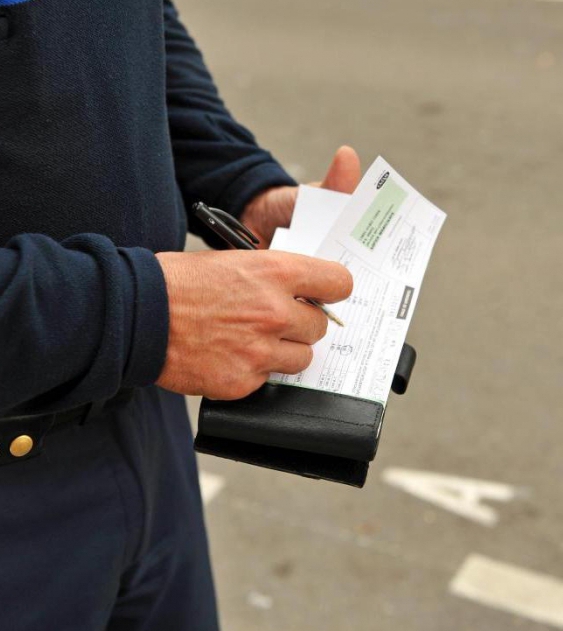Any violation of the law, even if it does not pose a danger to society, should result in liability. It is different. Administrative offense (you will recognize the concept, types in the course of the article) should also end with responsibility, as it is a negative action for society. Punishment depends on the goals of the offender, awareness of the consequences of his actions. There are different forms of liability. From this article you will learn the types of administrative offenses and penalties that can be obtained for them.
Key Terms
To begin with, you should consider all the concepts that you have to meet. So, administrative law is a special branch of jurisprudence, with the help of which the relations of the parties in the sphere of management are regulated. It records a large number of committed acts prohibited by law.
An administrative offense is a guilty act (or lack thereof), which is characterized by an encroachment of an individual or legal entity on the norms of public order, freedom and the rights of citizens. There is a certain responsibility for him.
Administrative punishment is the measure that is applied to the offender. It involves educational goals. Responsibility for such misconduct comes from 16 years.
An offense should not be confused with a crime. An act is not socially dangerous, although it can have certain consequences.
The composition of the offense and its types
This information is very important, since the degree of future responsibility depends on it. Before considering the types of administrative offenses, you need to find out the elements of its composition:
- An object. These are precisely those social relations that have been attacked.
- The objective side. It involves specifically expressed actions that violate statutory requirements.
- Subject. This, in fact, is the person who committed the act. At the same time, it should already reach 16 years of age and be sane.
- The subjective side. It assumes a person's own attitude to the perfect act.
Before considering the types of administrative offenses, it is necessary to find out the types of the composition of such misconduct. There are only two of them: formal (in this case the action itself is sufficient, the consequences are not important at all) and material (here the main indicator is the consequences and their relationship with the perfect violation).
In most cases, it is precisely the first type of violation composition that can be observed. The second is seen only when there are some consequences associated with the destruction of property.
What offenses are administrative?

It must be said that not all offenses are regulated by the Code of Administrative Offenses. These include violations committed in the areas of:
- Environmental protection, health, property.
- Energy, industry, environmental management, construction.
- Veterinary, agricultural, land reclamation.
- Traffic and transport.
- Information and communication.
- Entrepreneurship and business.
- Health and sanitary-epidemiological welfare of the population.
- Protecting the borders of the state.
- Public order and security.
- Army records.
It is these types of administrative offenses that administrative law considers as those that cannot be attributed to criminal offenses.Although it all depends on the form of guilt and the seriousness of the consequences.
Signs of administrative misconduct
Any crime has certain features. Its signs help determine not only the composition of the action, but also the need, as well as the size of the responsibility. Among them are the following:
- Wines. Without it, there is no violation. It also happens different: intentional or careless.
- Wrongfulness. The actions of a person are those that violate the norms of behavior established by society.
- Punishability. Any unlawful act must imply liability. That is, if a person has committed an offense that has the composition and signs of an offense, then it must be punished. Naturally, there are certain cases in which liability may not occur.
It is understandable that you need to know the types of administrative offenses, but without signs you can’t determine if the action is illegal.
Classification of atrocities
Now we should consider the types of administrative offenses. The presented classification will help you get to know them in more detail:
1. Depending on the area in which the rules were violated:
- in economic;
- in socio-cultural;
- in political and administrative.
2. Regarding the object on which the assault was committed: state, public order, public order security, property, civil rights and health.
3. Depending on the form of guilt: intentional or reckless.
4. By the nature of the infringement carried out, there are offenses: as a result of an action or its absence.
5. Depending on which entity committed the misconduct: an individual or a legal entity.
As you can see, the Code of Administrative Offenses (types of administrative offenses is considered by this code) covers a fairly large part of society.
Subject and subjective side of misconduct
Now it is necessary to understand in more detail the composition of the crime. So, as already mentioned, the subject is the person who intentionally or accidentally committed actions that led to undesirable consequences. Naturally, this is precisely what should be responsible for what has been done. However, if all the manipulations were reproduced in a state of insanity, then the perpetrator can avoid punishment. As for the subjective side of the offense, it also has its own elements:
- Wines. Without it, there is no violation.
- purpose. This is the result that a person strives for or suggests.
- Motive. It is precisely that driving, conscious cause that causes a person to act in this way, and not otherwise.
I must say that there are also special and special subjects. The first type includes drivers, officials and minors. The second type includes the military and other people who are subject to the provisions of the disciplinary charter. Certain types of administrative offenses require strictly prescribed penalties.
The object and objective side of the violation of administrative order

What types of administrative offenses exist, you already know. Now we should consider in more detail what exactly is an object and the objective side of an offense. So, let's deal with the first term. An object is that order or relationship that has long been regulated by legal norms and is binding on every citizen of society. They are protected by special liability measures. In addition to the Code of Administrative Offenses, such relations can be further regulated by other codes: environmental, labor, and land.
As for the objective side, it is an external manifestation of a violation of the established law. It includes such elements: undesirable consequences that have occurred, as well as the act or omission that led to them.Another sign of the objective side is the relationship between the violation and the result. Otherwise, there is no misconduct. For example, the violation of traffic rules, which manifests itself in non-observance of driving distance, requirements of road signs, and exceeding the permitted speed, can be attributed to the objective side. The consequence of such actions may be a traffic accident or the creation of emergency situation.
If we talk about the material composition, then an example would be a violation of fire safety, which leads to the destruction or damage to property. Naturally, in this case it is necessary to conduct an investigation and collect evidence.
Other components also belong to the objective side, due to which the type of responsibility is determined: the place and method of committing the act, the nature of the misconduct, as well as the maliciousness and repetition of the violation.
The concept and purpose of administrative penalties

Types of administrative offenses in the Russian Federation you have already considered. Now we should talk about responsibility. First of all, it is necessary to understand the very concept of administrative penalties. This is a practical form of expression of responsibility. The collection is carried out, assuming the following objectives:
- Warning. Punishment as a preventive measure is designed to ensure compliance with the rules established in society. Any person who wants to break them will not do this if he knows that he will bear some responsibility for this.
- Punitive. The violator of the law must be held accountable for his actions.
- Educational.
- Restorative. If by his actions a person has caused any damage, then he must be compensated.
- Signaling.
Types of punishment

Now we should consider the question of in what forms of penalties the offender’s responsibility to society is expressed. There are not so many of them. For different types of administrative offenses (Code of Administrative Offenses of the Russian Federation prescribes various penalties) there are only 7 main types of penalties:
- A warning. Most often it is used if the wrongful act was committed for the first time and is not considered malicious, did not lead to any consequences. It must be in writing. Both individuals and legal entities can be involved in such a penalty.
- Administrative penalty. This is a material penalty for the damage that the offender did. Its size depends on the established cost of living and the seriousness of the crime: from 5,000 to 200,000 rubles. In any case, the amount of funds levied should be a multiple of the value of the damaged property. Such a punishment cannot be applied to those persons whose behavior is regulated by special charters (military personnel, cadets and others).
- Seizure of the item (paid).
- Confiscation of property (subject). It is made in favor of the state. In this case, the item can be sold during the bidding. The amount of damage is calculated from the proceeds, as well as the costs of organizing the sale. The remaining funds are given to the owner of the property.
- Mandatory (corrective) work. A person is required to engage in such work only in his spare time from his main job. It is considered socially useful and free. An intruder can receive from 20 to 200 hours of compulsory work. However, he is obliged to carry them out no more than 4 hours a day. There are categories of people to whom such punishment cannot be applied: people with disabilities, pregnant women and others.
- Deprivation of special rights. It is done if the person is not the first time violates established procedures, for example, traffic rules. The term of deprivation is from 1 month to 3 years. It should be noted that special rights cannot be deprived of those persons for whom it is the main source of income.
- Administrative arrest. It provides for isolation of the offender from society for up to 15 days. He can only be appointed as a judge. It is established only in some cases of particularly malicious violation of order. It can also be applied administrative detention. However, it should be used only in cases where it is not possible on the spot to find out the identity of the offender. Detention can last no more than 3 hours.
There are additional types of punishments:
- Disqualification. It can last from 3 months to 3 years.
- The ban on visiting various competitions.
- Suspension of activity. It is used if the person who runs the business violates the basic rules for taking actions to maintain and develop it, for example, does not draw up relevant legal documents. The maximum term for such punishment is 90 days.
- Administrative expulsion from the state. It occurs under the control of special organs. Such a measure is applied if a person who does not have citizenship or is a subject of another country has committed such an atrocity that is equivalent to the actions of officials. Such punishment does not apply to military personnel. Only a court can make such a decision.
As you can see, an administrative offense (the concept, types and other features we examined earlier) cannot go unpunished.
Features of administrative responsibility
This question is also very important and necessary for those people who do not want to get into an unpleasant story. Since you already know the types of administrative offenses and administrative responsibility, you still need to understand their features, which are quite a lot:
- The subject of the presented misconduct can only be a person who was aware of his actions at the time of their commission, that is, is considered sane.
- The main document that gives the right to bring the violator to justice is the protocol. It is drawn up immediately at the place of the misconduct.
- If a person who does not adhere to social rules has not yet reached the age of 16, he is still responsible for his actions in the same way as an adult. In this case, the case can be considered both in the presence of his parents, and without them. Especially if they were notified, but for a good reason could not attend the meeting.
- According to article 3.3 of part 2 “Types of administrative offenses”, detention or arrest is the maximum measure of punishment and can be applied only in exceptional cases.
- All cases related to this type of misconduct are considered at the place of residence of the person.
- Notices that a hearing will be heard are transmitted using the summons or other means of communication.
- Article 3.3, “Types of Administrative Offenses,” states that all types of punishments can be applied in the form of both basic and additional measures.
- The decision on the case cannot be made later than 2 months after the commission of the crime.
- It is possible to appeal the decision within 10 days after its adoption. The application should be submitted to the district court.
- If the offender is fined, he must pay it on time. Naturally, this should be done voluntarily. Otherwise, if it is not paid within 70 days, the funds will be withheld.
- Enforcement of a court order is carried out immediately after it enters into legal force.
- All types of administrative offenses and administrative liability do not entail any criminal record.
That's all. Now you know what an administrative offense is, the concept, composition, types of penalties and other information on this topic. Despite the fact that such misdemeanors do not entail a criminal record, still you should not commit them. Be law abiding citizens. Good luck






